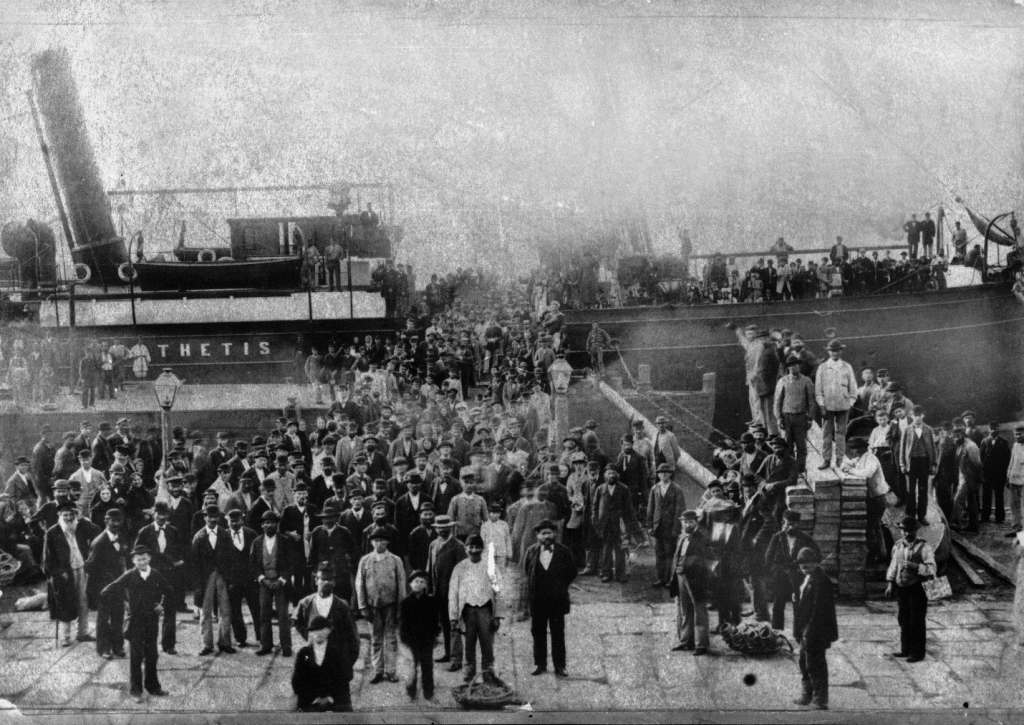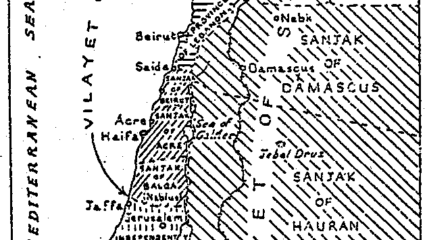By Scott Abramson and Ken Stein
In his famous 2004 essay “Between Right and Right,” Israel’s most celebrated novelist, Amos Oz, reflects on Israeli society, summing up his fellow citizens with this appraisal: “What we, Israeli Jews, really are [is] a bunch of half-hysterical refugees and survivors.” Half-hysterical or not, for many Jews the Jewish state has indeed been a refuge for refugees and a sanctuary for survivors. But while Israel is far from the only country to have afforded shelter to escapees fleeing death and expellees driven from their homes, the immigrants it has welcomed differ both in number and in kind from immigrants elsewhere. First, survivors of genocide and victims of ethnic cleansing who have made Israel their home are, as a share of the total population, far more numerous than in any other land. In this respect, Amos Oz’s 2018 description of Israeli society rings true. But besides being refugees, these immigrants have also been returnees, and for them Israel is not merely safer ground, but also kindred soil.
It’s precisely because the Land of Israel is not just any land, but the Jewish homeland, that it has beckoned Jews from exile for 2½ millennia, recalling them from their dispersion. Connected by biblical covenants repeated in prayer for centuries, Jews focused on Zion and Jerusalem through liturgy, hoping to return to the Land of Israel for almost as long as there was a Diaspora. Since 539 B.C.E., a little more than a half-century after the first enduring Diaspora communities took root in Egypt and Iraq, the “Return to Zion” has been constant. Throughout history, the flow of Jews back to their homeland has sometimes been a trickle, sometimes a wave and sometimes a flood. On occasion, these homecomings were coordinated, collective efforts — like the “Aliyah of 300 Rabbis,” the mass aliyah of French and British Jewish scholars in 1211— but mostly they were haphazard personal initiatives of individuals.
Nor was the Return to Zion ever easy. Before the locomotive and the steamship revolutionized long-distance transport in the 19th century, travel was a dangerous and often lethal proposition. A strong constitution and good fortune were essentials; otherwise, adverse weather, wildlife, disease, dehydration, highway robbers and stranding threatened to intercept these travelers. Yet for all these potentially fatal hazards, in the words of the Israeli Declaration of Independence, “Jews strove in every successive generation to re-establish themselves in their ancient homeland.”
For some Jews, like Nachmanides, the 13th-century Spanish Jewish rabbi and philosopher, returning to the Land of Israel was no mere sacred act; it was a sacred obligation, “a positive commandment for all generations obligating every individual, even during the period of exile,” the pre-messianic age. For other Jews, living in the Land of Israel was important, but dying there was no less so because it meant being interred in Israel’s sacred soil, a practice sanctified in the Talmud: “Whoever is buried in the Land of Israel is deemed to be buried under the altar.”
The volume of Jewish immigration over the ages was often tied to an event in the Diaspora — a mass expulsion, for instance — or in anticipation of an event in the homeland: namely, the coming of the Messiah. Diaspora Jews were often convinced that certain years portended the Messiah’s advent, so they made their way to Palestine to welcome him. The most recent such year that brought thousands of Jewish messianists to the Land of Israel was 1840 (5600 in the Hebrew calendar). Citing the Talmud and the Zohar, the central text of Kabbalah, eminent rabbis like the Sephardi Judah Alkalai and the Ashkenazi Gaon of Vilna encouraged their disciples to return home to await the Messiah.
Seen against this backdrop, the Zionists who began settling in the Land of Israel in the late 19th century were simply following the same path home trodden by their ancestors for more than 2,000 years. Spurred by growing antisemitism, a large number of Jews left Eastern and Western Europe in the 1880s, with several thousand returning to their biblical origins, seeking to create new lives and livelihoods. Gradually the idea of Jewish national identity crystallized into building additional territorial presence in Eretz Yisrael, or Palestine. Then there were 25,000 Jews in the area. By 1939, more than 400,000 Jews lived in the Land of Israel, and by May 1948, the number was 650,000. (Of note, two-thirds of the total Jewish population in Palestine when the state was declared was present by 1940. From 1945 to 1948, when the state was established, 100,000 displaced Jews, mostly from Europe, immigrated to Palestine.)
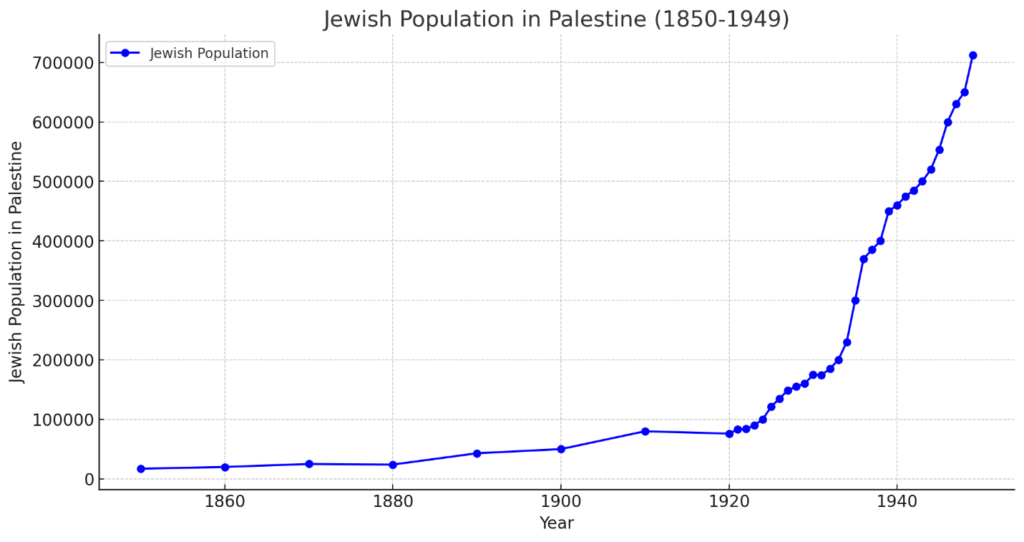
Linking Jews to the land became the central feature of Zionism. Jews built settlements, urban centers, suburbs of neighborhoods, political institutions and an infrastructure in the process of state building. Jewish geographic development concentrated on the Jerusalem-Tel Aviv road. From the 1880s forward, Jews immigrated in what has come to be defined as a series of aliyot or waves of migration. Although in the course of the five aliyot Jews built hundreds of settlements and Jewish immigration never stopped, immigration was stifled to the area along the coastal plain from Gaza to Haifa and from Haifa through the Jezreel Valley to south of the Sea of Galilee and then north to the Lebanese-Syrian border.
The establishment of the State of Israel in May 1948 spelled the end of these restrictions, and for the first time it fell to Jews, through self-empowerment, having shaped their own political destiny, to set their own immigration policy. This policy was expressed in a single sentence in the Declaration of Independence: “The State of Israel will be open for Jewish immigration and for the Ingathering of the Exiles.” To this end, in 1950 the Israeli parliament enacted, by a unanimous vote, what is probably Israel’s best-known and arguably its most consequential law, the Law of Return. This legislation stipulates that all Jews the world over reserve the right to immigrate to Israel and to receive full citizenship. Since then, the law has been amended twice: in 1954 to exclude Jews with a criminal history and in 1970 to bring closure to an open question: Who is a Jew?
Forming a Nucleus for the Jewish State: 1882-1947 (Hebrew) (Spanish)
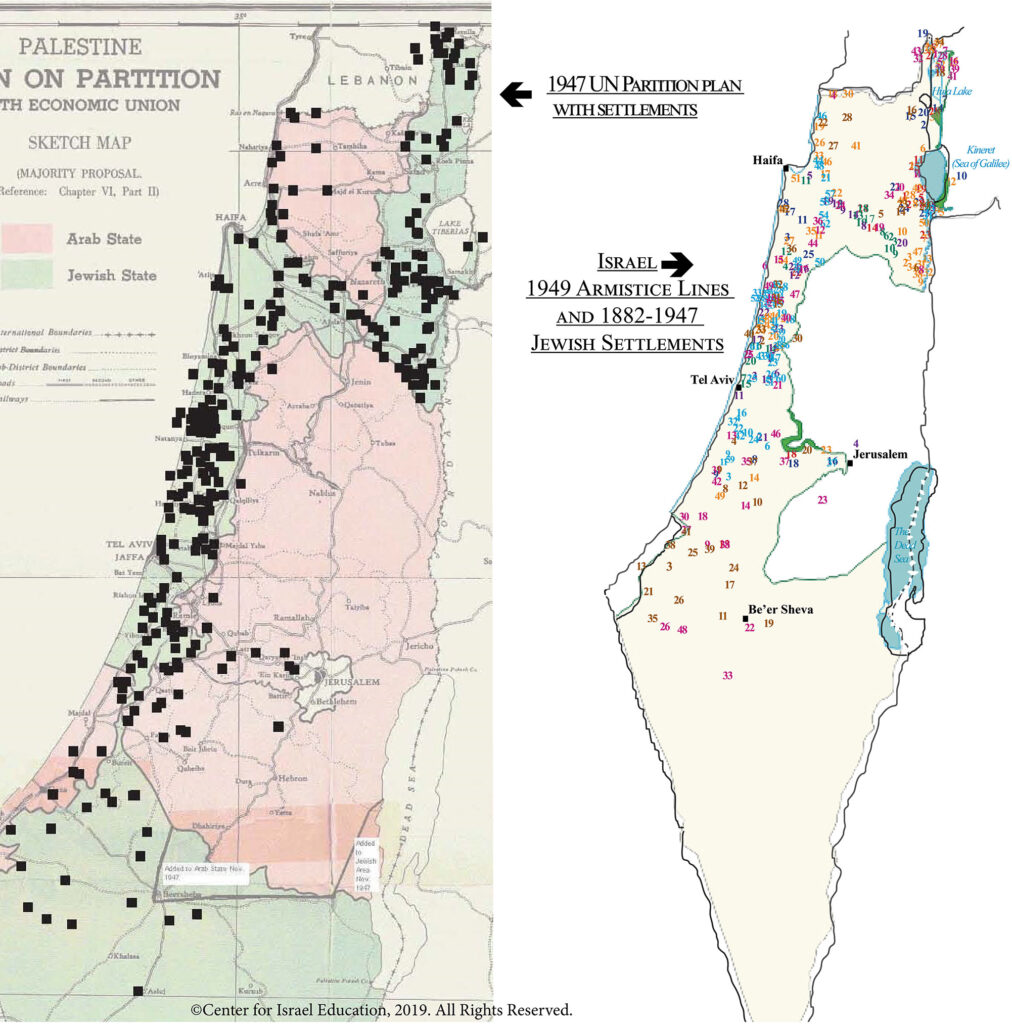
Under the Law of Return, Israel has become the quintessential country of immigrants. Today almost a quarter of Israelis are foreign-born, but the rest of the population consists overwhelmingly of the children and grandchildren of immigrants. The journey home of Israelis’ recent ancestors began in about a hundred countries across all six inhabited continents. But two parts of the Jewish world contributed the majority of Israeli immigrants over the years. The first is Eastern Europe, specifically the contiguous expanse of territory that included the Russian Empire, Hungary and Romania. The second is the Islamic world. Jews who came to Israel from the Islamic world emigrated from some 15 Arab countries and, in lesser numbers, from Iran, Turkey, Kurdistan and Bukhara (a historical region of modern Uzbekistan). Still fewer came from Afghanistan and Pakistan.
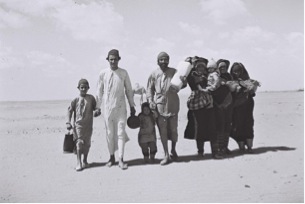
While the mass of Israelis emigrated from Eastern Europe and the Islamic world, others came from Australia, India, sub-Saharan Africa (almost exclusively Ethiopia and South Africa), the Americas (mainly the United States, Canada and Argentina) and Western Europe (mainly France and Britain).
For all the challenges that have come with being a country of immigrants, Israel has proved remarkably adept in absorbing its disparate Jewish communities, so much so that it stands as one of history’s most successful melting pots. Perhaps it is fitting, then, that the man who coined the term “melting pot” was Israel Zangwill, one of the earliest and most influential visionaries of Jewish statehood.
— Scott Abramson and Ken Stein, February 15, 2025

